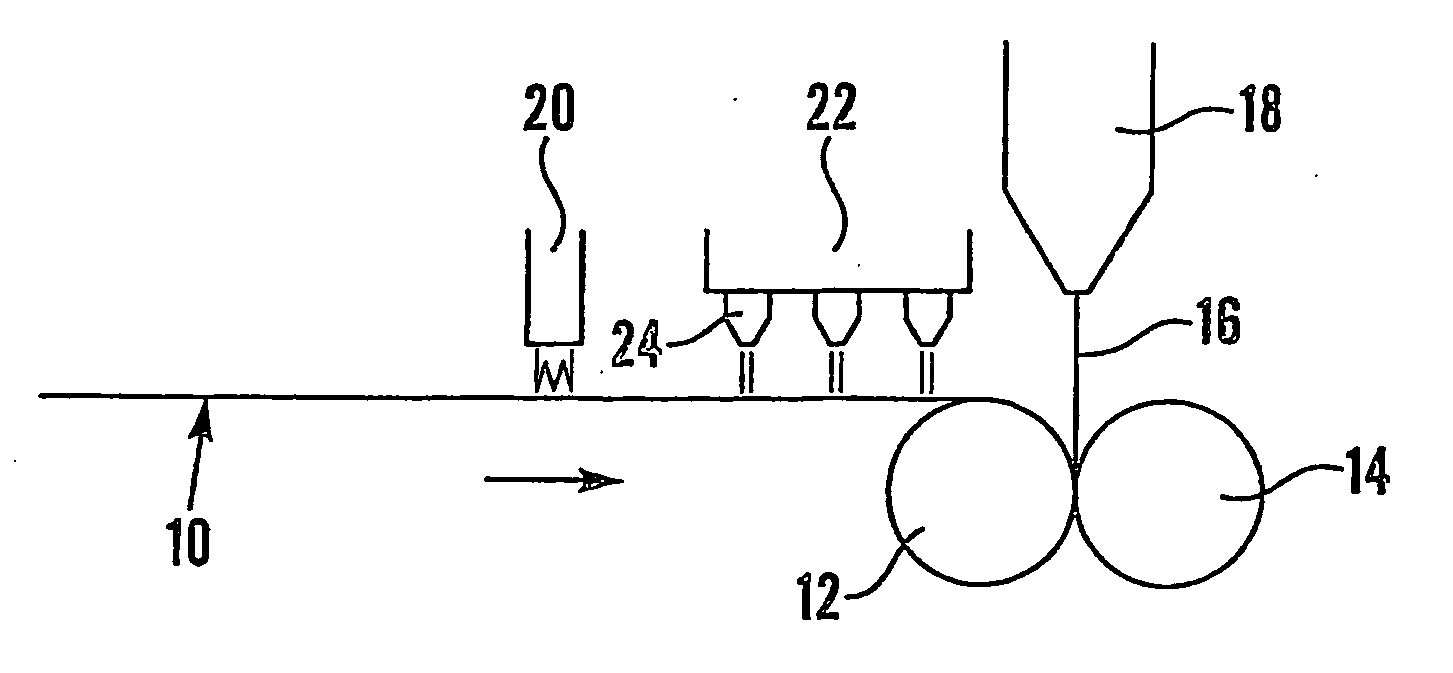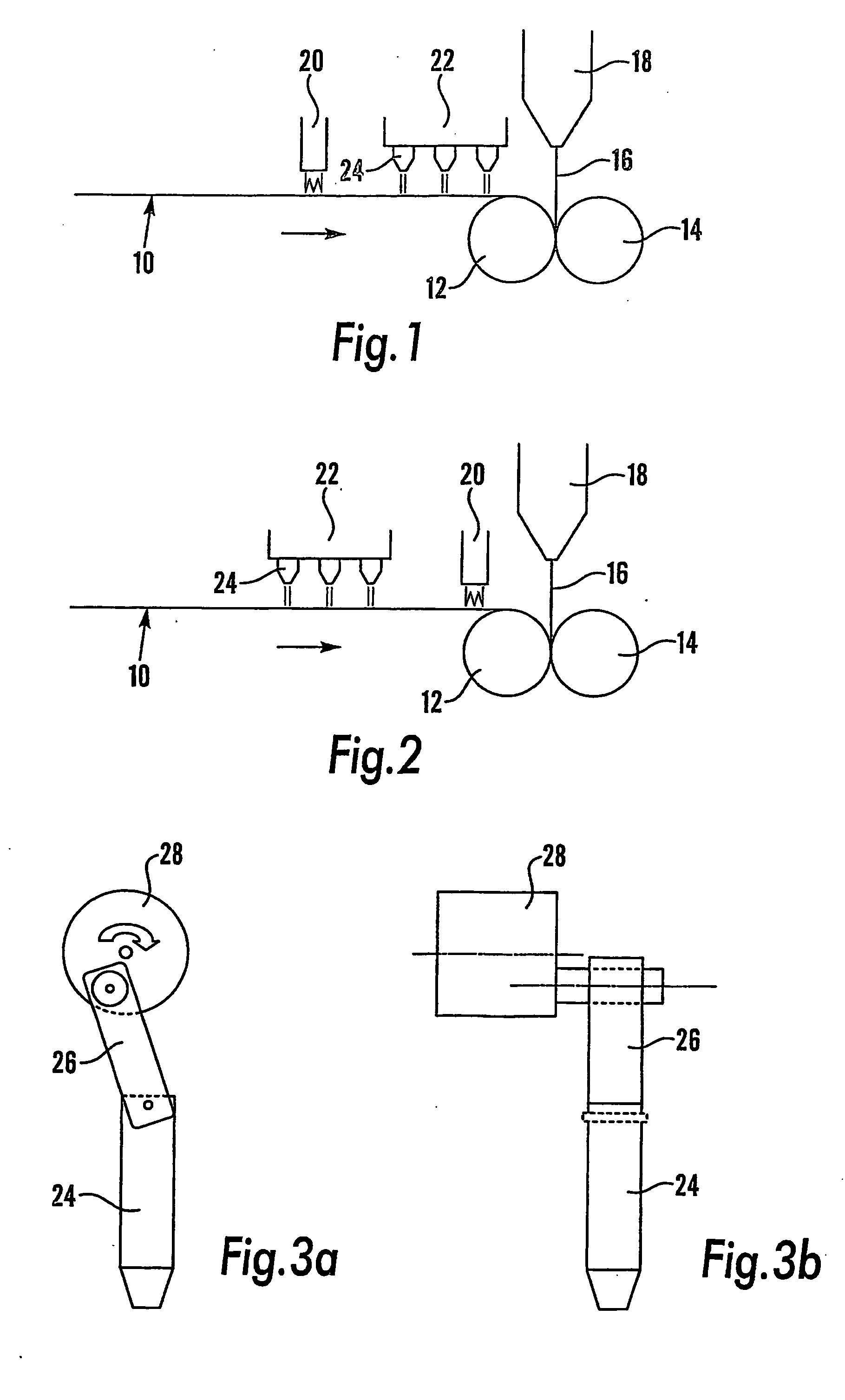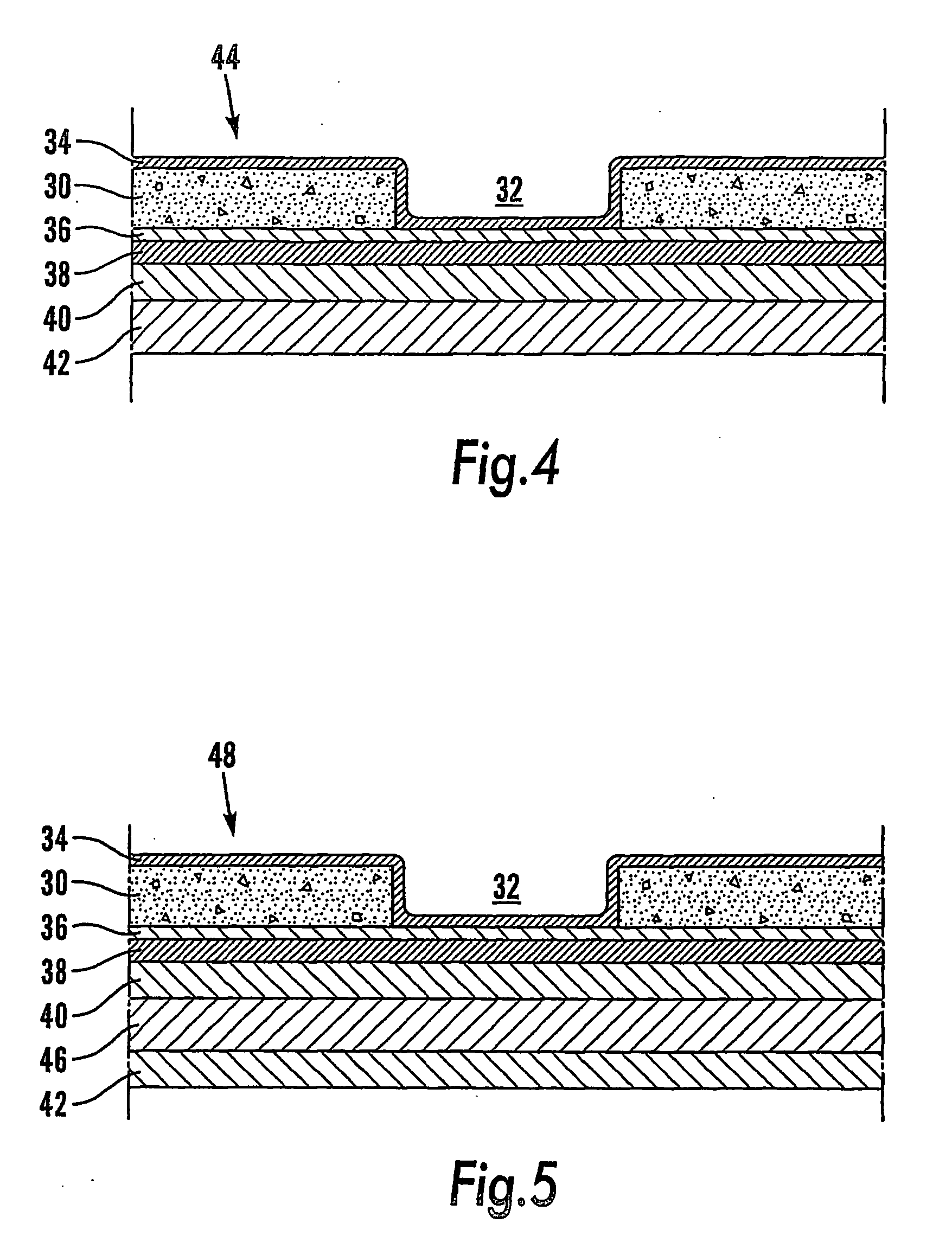Method in production of packaging laminate
a technology of packaging and laminate, which is applied in the direction of flexible covers, paper/cardboard containers, containers, etc., can solve the problems of insufficient pressure between the aluminum foil and the polymer layers, the difficulty of obtaining adequate adhesion in the holes, and the gas tightness of the packaging container being impaired, so as to improve the internal adhesion and improve the sealability. , the effect of improving the internal adhesion
- Summary
- Abstract
- Description
- Claims
- Application Information
AI Technical Summary
Benefits of technology
Problems solved by technology
Method used
Image
Examples
example 1
[0053] A series of tests were performed on adhesion and openability for a membrane covering a pre-punched hole in three types of laminates having different inside structures. In the first test series, which were performed on a pilot plant, the inside thermoplastic structure consisted of LDPE / m-PE and in the second test series, which were performed on a pilot plant, the inside thermoplastic structure consisted of EAA / m-PE. In all cases, the aluminum foil to be joined with the inside structure was treated with plasma and / or flame. The relative results on adhesion and openability are shown in Table 1.
TABLE 1LDPE / m-PEEAA / m-PEadhesionadhesionopenabilityopenabilityPlasma+++n.t.n.t.Flame++n.t.n.t.Plasma + flamen.t.++n.t.+++Flame + plasman.t.+++n.t.+
n.t. = not tested
[0054] As can be seen, for the laminate having a EAA / m-PE inside structure, both adhesion and openability were greatly improved by the combination of plasma and flame treatment. Moreover, it seemed that while the adhesion was...
example 2
[0055] A test series was made in pilot scale to produce PLH packaging materials by alternative techniques intended to increase long-term adhesion between aluminum foil and inside layers of the packaging materials, and to improve the openability for the caps that were positioned in the holes in the packages made from the packaging materials. The packages made from the packaging materials were filled with an aggressive product.
[0056] The following packaging materials, treated in different ways, were investigated:
[0057] Pre-made inside: The inside layers were pre-made together with the aluminum foil. Then the pre-made layers were laminated with paperboard with pre-made holes, and decor layer. The intention was to decrease air entrapment in the area of the holes.
[0058] Doubl. Adh.: A doubled amount of adhesive polymer was used for the first inside part-layer, in order to increase adhesion and resistance to migration of free fatty acids in the aggressive product.
[0059] Flame / plasma: ...
PUM
| Property | Measurement | Unit |
|---|---|---|
| temperature | aaaaa | aaaaa |
| temperature | aaaaa | aaaaa |
| temperature | aaaaa | aaaaa |
Abstract
Description
Claims
Application Information
 Login to View More
Login to View More - R&D
- Intellectual Property
- Life Sciences
- Materials
- Tech Scout
- Unparalleled Data Quality
- Higher Quality Content
- 60% Fewer Hallucinations
Browse by: Latest US Patents, China's latest patents, Technical Efficacy Thesaurus, Application Domain, Technology Topic, Popular Technical Reports.
© 2025 PatSnap. All rights reserved.Legal|Privacy policy|Modern Slavery Act Transparency Statement|Sitemap|About US| Contact US: help@patsnap.com



